#european tradition art music
Explore tagged Tumblr posts
Text
FRIENDS OF MUSIC #2 in 2024-2025: PIANO WORKS OF BEETHOVEN, CHOPIN, DEBUSSY, and GERSHWIN, performed by HAN JING and KENNETH KRAMER; ELLIOT UNITARIAN CHAPEL, 8 DECEMBER 2024
I might well have stayed home and watched this stream as the second half was seasonal music by an a capella jazz group. But Bob Chamberlin took me up on an offer to help out, so I ushed or at least greeted and handed out programs. I was glad to do it and enjoyed meeting the audience in that way. I sat in the wings with the performers and Bob and had a chance to talk to the artists (undergrads with other serious second majors—pre-med and aviation engineering).
HAN JING played Ludwig Van’s Sonata #14. Bob opened last month’s program with Debussy’s Clair de Lune, so it was “lunar serendipity,” as he put it, to have this “Moonlight” sonata to start this one. But, it was more than the titles, as, just as Bob reminded us of the nuances and complexities that go with Debussy’s familiar melody, here we had both the full development of an equally familiar theme and its full context with the other two movements. The full first movement is distinctively Beethoven of course but it is harmonically systematic as Bach’s exercises like the Inventions or Sinfonias. It’s a legendary melody but so much more. And that opening movement makes even more sense with the bright Allegretto and the Presto Agitato that was not just presto but had its own thematic agitation and complexity. The other Bach parallel is that hearing the rest of the Partida in D minor before THE monumental Chaconne amplifies that great work.
KENNETH KRAMER is even younger, a second year, so almost recital like, he had shorter pieces. But they were challenging and delivered with aplomb. The Chopin Polonaise was “Military” marching smartly. A Children’s Corner from Debussy cascaded nicely. And then there was a Gershwin Prelude, not quite jazz however composed through with moments of ragtime feel and block chords. But it wasn’t a show tune either—and Gershwin’s contributions to the Great American Songbook are unimpeachable. That this work was inferior to those masterpieces prompts two thoughts/anecdotes.
First, I have heard Bill Charlap on more than one occasion talk about Gershwin encouraging the exiled Russian composer Vladimir Dukelsky to try his hand at popular songs to go with his “serious” ambitions. Well, Vernon Duke wrote Autumn in New York and April in Paris, so he had a certain knack.
But, Gershwin had his own pretensions. Now, I have not allowed myself the full listen to Rhapsody in Blue that this series has provided for Clair de Lune and the Moonlight Sonata. But, in that ignorance, I have some sympathy for Ethan Iverson’s recent judgment that it is “the worst masterpiece.” See the first comment for a follow up on his NYT commentary from his Substack which links to the, needless to say, controversial article. Read for yourself, but the gist of his argument is that its genuine appeal prematurely ended the exploration of how the European and African American Art Music Traditions could grow together. And rather like this little prelude it falls between two genres.
The performers were wonderful and it all gives me something worthwhile to think (and write) about. It was short but sufficient.
Stream of this performance: https://www.youtube.com/live/GUd-OZuSDXU?si=wZNjWDixTrJEWJkt
Ethan Iverson on Gershwin: https://iverson.substack.com/p/tt-359-follow-up-on-rhapsody-in-blue
0 notes
Text
A piece of a traditional song from Terres de l'Ebre (Catalonia).
Lyrics in Catalan and translation to English:
Donzelleta agraciada, a qui vos compararé? A la flor de la perera o a les roses del roser? A la flor de la perera us comparo per blancor, a les roses del roser us comparo pel color.
Beautiful maiden, who shall I compare you to? To the pear tree flower or to the rose bush's roses? I compare you to the pear tree flower for the paleness, I compare you to the rose bush's roses for the colour.
This singer has recently formed a band called Terrae to play traditional music from the Terres de l'Ebre region of Catalonia. You can hear them play the full version of this song, titled Cançó del pandero, in their first EP.
Link to the song on YouTube here.
Link to the song on Spotify here.
#música#arts#terres de l'ebre#terrae#palma d'ebre#catalunya#folk music#folk songs#catalonia#european folklore#folklore#traditional songs#traditional music#ethnography#ethnology#anthropology#culture#cultures#world music
106 notes
·
View notes
Text
i think sacred music in the kryn dynasty would be very cyclical and repetitive in form to symbolize the idea that life is a continuous thing (at least those who are consecuted right right) and is a cycle across lifetimes and yeah
#court rambambles#cr#critical role#kryn dynasty#finishing up my religions class and i've used the last two topics to research non-western music because hi music major western music gets#super fucking boring. and i've been having a Blast listening to classical indian music. this shit slaps. i fucking LOVE music with drones.#but since this is a religions class obvs im researching in in the context of religion so I'm doing music in hinduism and this was something#brought up in like 2 sentences not even in a paper im using a a ref and it reminded me a lot of this and idk yknow. very neat.#ive been thinking a lot about fantasy music as well. okay like using western music and medieval western European music as inspo is fine and#dandy.#but like goodness guys there are so many other amazing cultures and styles and genres of music and subdivisions within cultures and i just.#im so amazed by them. give me that microtonal music give me these awesome instruments give me these great scales and rhythms and just. yes#if anyone comes from some non western European cultures and has neat traditional/folk/classical/whatever music and they want to share it my#dms and ask boxes are/should be open and stuff. please i just like learning about music across the world#*non western-european bc yknow eastern europe has unique things too#FOLLOW ME FOR MORE POSTS LIKE THIS WHERE I RAMBLE ABOUT MUSIC AND MY INTERESTS. SOMETIMES I EVEN POST ART AND TALK ABOUT MY OCS WHOAAAA#please talk to me about music i just really like music. it's not like im majoring in it at all. is it a smart idea in this economy with adh#wellll yknow
48 notes
·
View notes
Photo
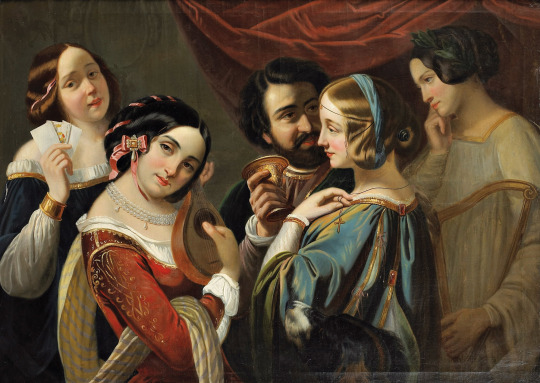
Follower of Eugène Devéria (French, 1805-1865) Interlude musical, n.d.
#art#fine art#french art#european art#europe#europa#musical interlude#interlude musical#fine arts#oil painting#redhead#brunette#blonde#art trope#traditional art#classical art#black hair#brown eyes#black eyes#music#musicians#musician#cards#drink#women in art
191 notes
·
View notes
Text
this stupid ass video
#art#traditional#music#musical notation#western european musical notation#scarlatti#piano#stupid#dog
11 notes
·
View notes
Text

Happy Hanukkah everyone!!
#ethan freeman#poto#phantom of the opera#european musicals#the phantom of the opera#elisabeth das musical#jekyll and hyde#jewish#jewish heritage#jewish tradition#jewish holidays#jewish artist#jewish art#jumblr
13 notes
·
View notes
Text
Exploring the Heart of West Africa: A Travel Guide to Burkina Faso
Burkina Faso, nestled in the heart of West Africa, offers an enriching blend of history, culture, and natural beauty. Known as the “Land of Upright People,” this country is a hidden gem waiting to be discovered by intrepid travelers. This guide will walk you through the essentials of visiting Burkina Faso, from its rich history to practical travel tips and must-see attractions. A Brief History…

View On WordPress
#" this country is a hidden gem waiting to be discovered by intrepid travelers. This guide will walk you through the essentials of visit#1960. The post-independence period saw several political upheavals#A Brief History of Burkina Faso#Acceptable credit cards in Burkina faso#Accommodation and Affordability#Accommodation ranges from budget hostels to mid-range hotels and luxury lodges. Prices are generally affordable#Activities for Tourists in Burkina Faso#adventure#africa#along with international organizations#and art scenes. Traditional music features instruments like the balafon and kora#and brochettes (grilled meat skewers).#and Lake Tengrela#and lodging are affordable#and maize. Popular dishes include tô (a type of porridge)#and natural beauty. Known as the "Land of Upright People#and rich cultural traditions.#and stay informed about the local situation.#and taxis.#and the bustling markets to experience local life. Bobo-Dioulasso The country&039;s second-largest city#and the country is known for its lively festivals and ceremonies.#and traditional African religions being practiced. Respect for religious customs is essential.#and you can exchange money at banks#avoid risky areas#Banfora Famous for its natural attractions#Before the advent of European colonization#Burkina Faso#Burkina Faso boasts a rich cultural heritage#Burkina Faso gained independence from France on August 5#Burkina Faso has experienced political instability
0 notes
Text
my addition for the first day... a small Hansi dressed up as Little Amadeus


The rules are simple: each day of October corresponds to a prompt aimed at inspiring you. The goal is to share every day a drawing, a story, a memory, a photo, a collage or even a song inspired by the daily prompt!
Use the tag #FALCTOBER and tag u/rockmefalco-ita on Reddit to show us what you came up with! If you do so on Instagram our tag is @rockmefalcoita: we will share in the stories everything you want to propose to us. We'll soon set up a page on our website rockmefalco.wordpress.com for you to share your #FALCTOBER contributions too! Reddit, our email, Instagram... All places are good places!
#rockmefalco#rockmeamadeus#falco#hans hoelzel#hans hoelzl#falcoposting#FALCTOBER#der kommissar#austropop#european pop#pop music#rock music#inktober#drahdiwaberl#art#traditional art#mozart#amadeus mozart#wolfgang amadeus mozart#p
10 notes
·
View notes
Text
“The farthing… has vanished”
Remember that line from the Nazi Zombie Flesheaters minisode? Sick and twisted. And we need to talk about the reason why, even though the magic trick in question is nowhere near as spectacular as the Bullet Catch. Let’s start with a quick recap:
The farthing was a British coin worth one quarter of a penny, discontinued in 1961 due to its plummeting worth. The reverse featured the image of a wren, one of Britain’s smallest songbirds with plumage in rather drab shades of beige and brown. Reminding you of someone?
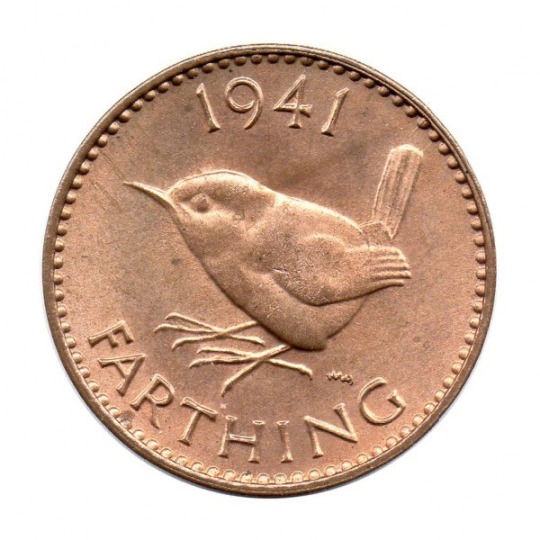
A popular design of a sixpence, the bigger coin in this set, minted in the 1920s and 30s depicted oak branches with acorns. Which means that seen from close quarters, so basically Crowley’s perspective, Aziraphale’s vanishing coin trick leaves empty branches with no bird in sight.
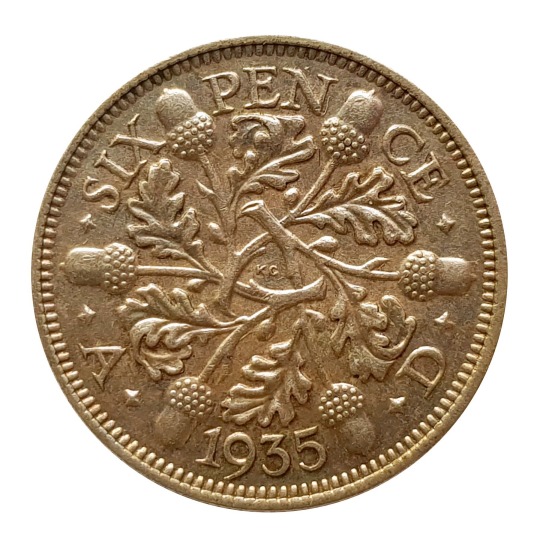
As if that image wasn’t traumatizing enough for almost everyone in the Good Omens fandom post S02E06, the etymology of wren’s name in most European languages refers to royalty in some way. Like a literal king or otherwise supreme bird. That’s why killing a wren or harassing its nest is traditionally associated with bad luck. In certain parts of France it’s still believed that the robbing of a wren’s nest will render the culprit liable to be struck by lightning.
In Irish the wren is called a trickster, which connects to the ancient (as in: mentioned by Aristotle, Aesop, and Pliny) fable on how wren became crowned in the first place — by proving that intellect beats strength:
On one occasion a general assembly of birds resolved to chose for their king that bird which could mount highest into the air. This the eagle apparently did, and all were ready to accept his rule when a loud burst of song was heard, and perched upon the eagle’s back was seen an exultant wren that, a stowaway under its wing, had been carried aloft by the kingly candidate. The trickiness angered the eagle so much, says one tradition, that he struck the wren with his wing, which, since then, has been able to fly no higher than a hawthorn-bush. (Ernest Ingersoll)
In art and folklore this little bird symbolizes rebirth, immortality, protection, and the promise of spring. As a luckbringer it was supposedly present at the stable in Bethlehem when Christ was born; and and Irish proverb runs: “The robin and the wren are God’s two holy men.”
But there’s also a catch. According to legends, it was the flapping of the wings or the song of the wren that betrayed the first Christian martyr, Saint Stephen, while hiding from the mob, and led to his stoning by the Sanhedrin — the highest tribunal consisting of the Head Priest and the Jewish elders.
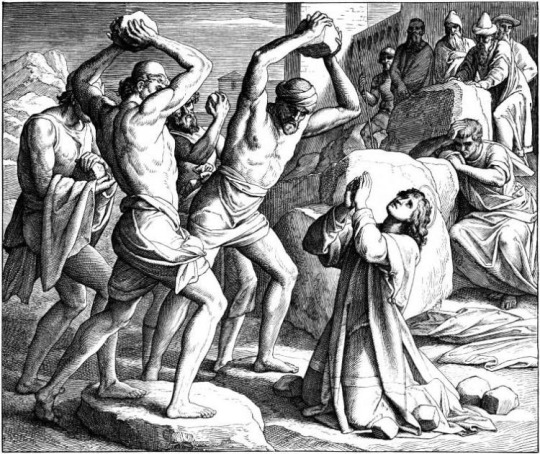
That’s why December 26, his remembrance day, is celebrated in the UK and Ireland as Wren Day. Its highlight was a traditional bird hunt, where the wren as king of the birds was hunted and subsequently paraded through the town and rural areas on top of a pole or holly branch, decorated with ribbons and colored paper, as a substitute of the ancient human sacrifice of the Year King for winter solstice. The wren boys still travel from door to door singing, dancing, and playing music, demanding money to “bury the wren”, but fortunately no more animals are harmed in the process.
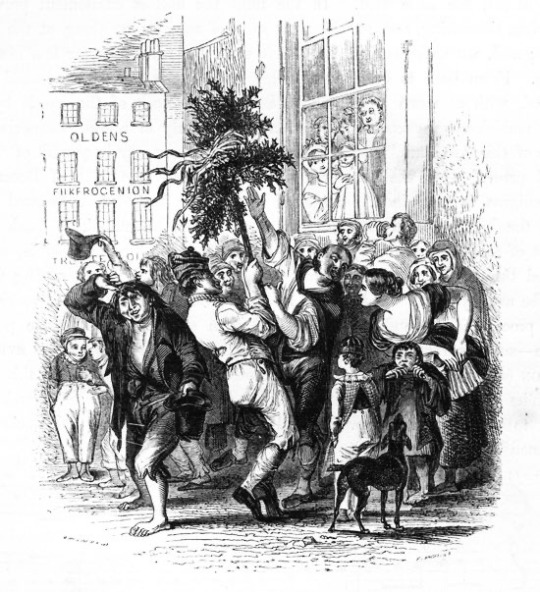
With Aziraphale being chosen as the new Supreme Archangel and literally disappearing from the face of the earth in the season finale, his becoming a scapegoat or a sacrifice to a greater, communal goal might be a real possibility when something goes wrong with the Second Coming. The good news is that this level of danger should be enough to get the Ineffable Husbands back on speaking terms.
#Yuri is doing her thing#Good Omens#Good Omens meta#Good Omens 2#GO2#GO2 meta#Aziraphale#Supreme Archangel Aziraphale#ineffable husbands#1941 minisode#1941 flashback#Fell the Marvellous#magic trick#the farthing has vanished#no nightingales
372 notes
·
View notes
Text
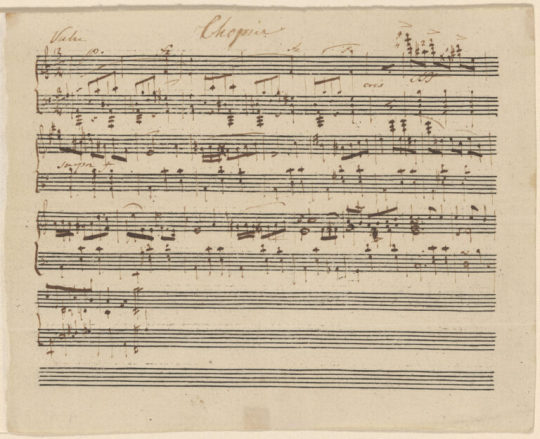
Lost Chopin Music Uncovered in ‘Thrilling’ Discovery
A curator at a museum in New York City has discovered a previously unknown waltz written by Frédéric Chopin, the first time that a new piece of work by the Polish composer has been found in nearly 100 years.
The waltz, written on a small manuscript measuring about 4 inches by 5 inches, was first discovered by curator Robinson McClellan in 2019, who then sought outside expert help, according to a statement from the Morgan Library & Museum on Monday.
“He found it peculiar that he could not think of any waltzes by Chopin that matched the measures on the page,” reads the statement.
“Chopin famously wrote in ‘small forms,’ but this work, lasting about one minute, is shorter than any other waltz by him,” adds the statement.
“It is nevertheless a complete piece, showing the kind of ‘tightness’ that we expect from a finished work by the composer.”
McClellan asked Chopin expert Jeffrey Kallberg, associate dean for arts and letters at the University of Pennsylvania, to help authenticate the waltz. “Extensive research points to the strong likelihood that the piece is by Chopin,” according to the statement.
This research included analysis by paper conservators who found that the paper and ink match those that Chopin normally used.
The Morgan Library & Museum believes that the fact that the manuscript is so small could mean that it was meant to be a gift that the recipient would have kept in an autograph album.
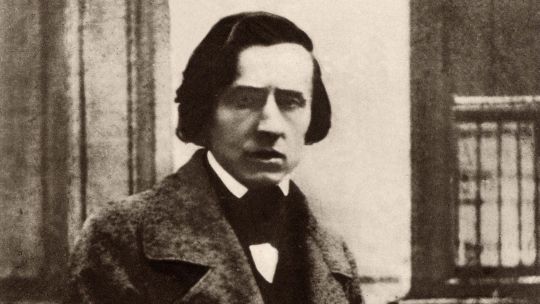
Chopin was known to sign manuscripts that were gifts, but this one is unsigned, which the museum says suggests that he ultimately decided against giving it away.
“This newly discovered waltz expands our understanding of Chopin as a composer and opens new questions for scholars to consider regarding when he wrote it and for whom it was intended,” said McClellan in the statement.
“To hear this work for the first time will be an exciting moment for everyone in the world of classical piano.”
“Our extensive music collection is defined by handwritten examples of the creative process and it is thrilling to have uncovered a new and unknown work by such a renowned composer,” said Colin B. Bailey, museum director, in the statement.
The discovery of an unknown piece of work by Chopin has not happened since the late 1930s, according to the museum.
The Polish composer was born in 1810 and was best known for solo piano pieces.
Chopin died in Paris, France, at the age of just 39. He’s one of Poland’s most famous sons, and his name adorns the airport serving the capital Warsaw, as well as parks, streets, benches and buildings.
His works and image are ubiquitous across the central European country, and his residences bear unmissable plaques. Busts and statues of his likeness are dotted across several major cities.
Even his heart, preserved in alcohol after his death in 1849 is sealed into a wall of Warsaw’s Holy Cross Church.
But recent suggestions about Chopin’s private life collided awkwardly with Poland’s staunchly conservative traditions – and caused some to question whether the story of Chopin that Poles are told from a young age is true.
According to a Swiss radio documentary released in 2020, the composer had relationships with men, and those relationships were left out of history by successive historians and biographers; a potentially thorny charge in one of Europe’s worst countries for LGBTQ rights.
By Jack Guy.
Chopin - Waltz in A Minor (Discovered in 2024) - Played by Lang Lang
#Chopin#Frédéric Chopin#Lost Chopin Music Uncovered in ‘Thrilling’ Discovery#New Waltz by Chopin Found in Morgan Library#Morgan Library & Museum#polish composer#art#artist#art work#art world#art news#history#history news#lost and found
63 notes
·
View notes
Text
Exmormon thoughts on the Book of Mormon Musical:

The whole thing was spectacularly irreverent
*does some googling* oh its written by the creators of south park, that makes sense
The bright and cheery forced smiles of the missionaries are accurate
The set is amazing, with it looking like an lds temple and everything. The backdrop with the clouds and the planets even looks like the giant murals they have in the temple visitors centers
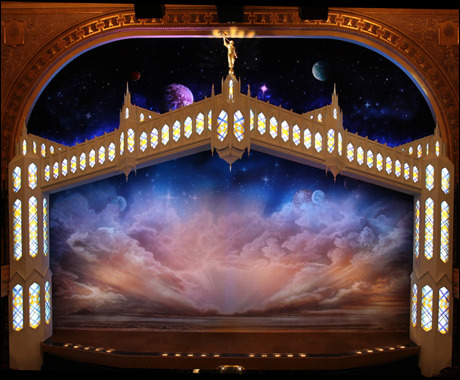

I love the salt lake city backdrop with the mormon temple right in the middle surrounded by the more obvious corporations like McDonald's and stuff. Did you know the LDS church owns a mall in the same city? It even has a little river going through it
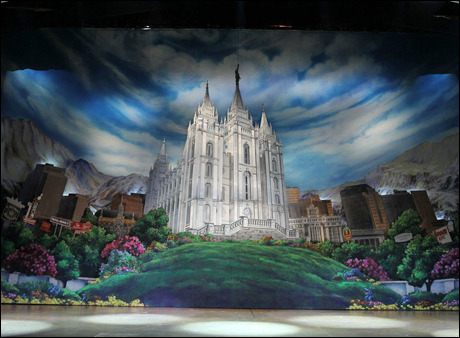
The spooky mormon hell dream sequence was the best thing i've ever witnessed. Especially as somebody who really did get guilt-fueled nightmares, albeit not as theatrical and hellish lol
Seeing the cups of coffee dancing in hell alongside Jeffrey Dahmer and Adolf Hitler was the best, my favorite moment

The song about turning off your uncomfortable/unapproved thoughts was also amazing. The actual phrase commonly used is putting the thought "on your shelf" to set it aside to think about later. There's literally a song they teach to toddlers about never frowning because nobody likes it and making yourself smile instead.

Hearing people crack up about things you used to believe sucks but finally you are surrounded by people who agree that this is ridiculous rather than people who think you are the crazy one for doubting
Mormons don't actually think Jesus was blond but they do think he visited America and most of the art makes him look northern European
Mormons don't really believe in a traditional hell or that Jesus hates you for sinning, but the level of guilt is still the same. Like that might as well be the case because your eternal afterlife is still at stake.

The "I Am Africa" song is so on point. Missionaries go to a foreign country and really do start wearing their traditional clothes and keep speaking the language even after coming home as if they really are part of the culture now
I was not expecting to see punk rock Darth Vader or Yoda or lieutenant Uhura or Sam and Frodo.

When Elder Price said "fuck," that was a blessed moment
I'm so glad I never actually went on a mission and could only relate so much. But that dedication to following all the rules in the missionary handbook is REAL and not even as intense as they portrayed it at times. The religious scrupulosity OCD is like no other. Like it's not unheard of for a missionary to keep working on their mission even if their mom or someone died while they were away.
There are still so many weird things about growing up mormon that they didn't even touch on. Like heaven being an MLM, multiple levels and everything.
Thanks for the read, feel free to ask any questions if you're curious because I like complaining about mormonism lol
#bom musical#book of mormon#the book of mormon#exmo#exmormon#book of mormon musical#the book of mormon musical#the book of mormon broadway#book of mormon broadway
179 notes
·
View notes
Text
FRIENDS OF MUSIC, #1 in 2024-2025 at ELIOT CHAPEL
Friends Bob Chamberlin and Jan Chamberlin are organizers of this fine chamber music series and Bob opened the program and the season with Debussy’s Clair de Lune. Also before intermission was Kenji Bunch’s Summer Sounds performed by the Xylem Collective, a wind ensemble. The showpiece though was the Mendelssohn Piano Trio #1 featuring Daniel Schene/Wanda Becker/Andrew Ruben.
Clair de Lune suffers from familiarity, so, in a variation on Yogi Berra, nobody listens to it any more. Bob let me listen to it and that’s a gift. In this setting, of course, he’d play it straight through. But too often in popular culture, a relatively few seconds of the theme fills in for the work as a whole. Hearing it as a whole and with much more experience with Debussy’s piano music made it more than the appealing theme. The full five minutes allows the song, the tune to breathe. Putting it with the rest of the Suite Bergamasque might have provided even more context. But Bob’s unrushed reading was an opportunity to let go of preconceptions.
The Xylem Collective finds underperformed, often contemporary, compositions for wind quintet (and sometimes, this time, piano) Bunch’s suite was lively and appealing both in its own right and for this appealing instrumentation to explore. There were pairings that introduced themes and movements—bassoon/clarinet, piano/oboe, bassoon/horn, piano, then bassoon (my favorite), and piccolo/piano. They all got to explore each mostly American theme. That favorite bassoon section began with an extended note before giving way to an oh so familiar theme. While I thought it was a hymn, but, as they told me, it was a heart wrenching song I know from Bruce Molsky, Peg and Awl, about the displacement of crafts people by industrialization. The bassoon is properly plaintive. Check out about the 30 minute mark of the video below. But I just like bassoons and the harmonies with clarinet and horn in those sections were evocative..
After intermission, Daniel Schene offered crisp comments about the Mendelssohn Trio. The crispest comment was that “it’s a helluva piece.” Indeed it is. I prepped for this by watching versions featuring, in turn, Martha Argerich, Joshua Bell, and Stefan Hofmeyer of the ATOS trio. I was drawn sequentially to the piano, violin, and cello. But Thomas Hoppe from ATOS was impressive too, so as fine as the trio and chamber music elements of the work, today and generally, the piano work is compelling. Movements one and four roar, three is brisk and reminiscent of Midsummer’s Night Music. Schene did roar, but like Argerich and Hoppe, he was an attentive ensemble player. Becker and Ruben were unassuming but right there and Mendelssohn gave all three (and us) lots to work with. My first piano trio was #2 and that is immediately familiar—and now this one is too.
Here it is: https://www.youtube.com/live/3Dm-BTO96pY?si=If2wT-5H8wlaEjrz
0 notes
Note
Folklore ask! Any stories on how the Greek mermaids got to be named after gorgons instead of any other countless sea or water spirits in myth? Does it have to do with princess Thessalonike?
I think this is actually a very complex story involving literature, oral tradition, the perception of creatures, women, historical figures and the meaning we apply to symbols according to our circumstances. This is a long story so there is going to be a Read More cut below.
First of all, Modern Greek has two words for the mermaid; γοργόνα (ghorghóna) and σειρήνα (sirína), so as you see both gorgons and sirens were conflated with the image of the mermaids at some point. In fact, the sirens did that first. I write "ghorghóna" in Latin characters to stress the change of the pronunciation of γ to a voiced velar fricative ever since late antiquity but otherwise the word is the exact same.)
Ancient Greek Mythology did not have a mermaid creature in the way we imagine it since the Middle Ages but the Ancient Greeks were aware of an ancient Assyrian deity who was imagined like that. This was goddess Atargatis who was known in Greek as Derceto. Greeks identified Atargatis / Derceto as the same with a mermaid goddess worshipped in Askhelon, somewhere in the north of modern-day Syria, according to Diodorus (1st century BC) but also Ctesias (5th century BC). The Roman Lucian confirmed this perception in the 2nd century AD. It is believed that to some degree this worship was known to Greece, especially during and after the Hellenistic period. For example, there has been a scripture found in Pella, Macedonia (<- coincidence?) dating to 206 AD in which the veneration of an Assyrian water deity is described.
The early Sirens of the Greek mythology (since 7th century BC) were depicted as creatures with the bodies of birds and the faces of women, who would seduce sailors with their beautiful music and singing. However, from the Classic period onwards there is scarce art depicting them with a fish body instead, maybe due to an Assyrian influence or maybe because the Sirens were creatures associated with the water mostly. They lived at the shore waiting for ships to pass and they were children either of River God Achelous or the Titan Oceanus or of Phorcys, son of Pontus (Sea).
A critical moment for the establishment of the siren as a mermaid in European minds might have been the book Physiologicus, written in Greek around the 2nd century in Alexandria. The book was a predecessor of bestiaries and was connecting various beasts (mostly actual animals but also a few mythological creatures) with the Christian doctrine by associating them with some trademark moral qualities they supposedly had. Physiologicus became very impactful and was translated to Latin, Armenian, Ethiopic, Syriac and later to Slavic, Old German and other European languages. I wasn't able to find what exactly was said about the Siren in the original Physiologicus, however the 10th century German copy Bern Physiologicus described the siren as half-woman, half-fish. Also, from the 7th century onwards western European books assert that the sirens are "sea girls" and are described as "having scaly fish tails". I did find a tiny image of a Greek manuscript of the Physiologicus and it has this drawing of the sirens, who indeed look a lot more like merpeople than half-birds:

Again, Physiologicus was very influential and the rest of the Early Christian tradition also explored the theme of the sirens extensively through the lens of morality. Early Christian documents discourage people to believe in the literal existence of sirens (fair enough) but they also shape their meaning into an allegory for prostitutes or any vile lustful women who are a danger for the moral male. In this context, the fish form gains more and more ground as well as alternative imaginings of the sirens as half-snakes or half-dragons. It should be noted that there are even imaginings in which the Siren has simultaneously fish and bird traits. The scaly look though, the picture of the siren ascending from the dark abyss instead of a feathery flying singer was more effective for the description of a destructive, dangerous feminine being. It is in the Byzantine period and respectively in the Middle Ages in West Europe when mermaids really become popular. In spite of all that, the bird version was not obsolete. The 10th century Byzantine encyclopedia Suda describes the sirens as half-birds.

Pages from Suda.
Let's go to the Gorgons now. The Gorgons were daughters of Phorcys, son of Pontus (Sea), much like the Sirens according to one version of their myth. They are too part of the general sea mythological sphere. They lived either beyond the edges or in Oceanus, in a hardly accessible rocky island. Their bodies were imagined as centaurs or wasps as early as in the 8th - 7th centuries BC but after that point they were imagined as humanoid, however sometimes they have snakes in their waist too or a scaly appearance or even wings, like we see happening with Sirens. All original accounts agree to a terrible old-looking repuslive face crowned with snakes. So does their name; Γοργώ (Gorgó) means "terrible looking, fearsome, terrifying". Despite that and before Ovid's popularisation of the Roman version of a victimized Medusa, the Greek Pindar already described Medusa as an incredibly beautiful woman in the 5th century BC. Pindar's take was influential and after this point ancient Greek art depicts a fairer Medusa. One can argue that Medusa typically looks scary but beautiful in pop culture ever since. In other words, as time passed there was some convergence in the way Gorgons and Sirens were imagined; the duality of being beautiful yet terrible and vile, sea creatures, feminine attributes, eventually a scaly look.
Let's make a pause now to talk a bit about Thessalonike and her tragic story. Thessalonike was Alexander the Great's half-sister, so named by her father Philip after an (undefined) victory against the Thessalians. Her mother Nicesipolis died when she was a baby and Philip died when she was a child so she was raised by Olympias. I would like to stress that there was a signficant age gap between Thessalonike and Alexander and there should not have been a lot of interaction between them. After Alexander's death, Olympias had still not married Thessalonike to anyone, favouring her own daughter first. Cassander, one of the diadochi, killed Olympias and Alexander's son and successor and married Thessalonike probably forcefully in order to get a better claim for becoming the King of Macedon. Cassander then named a new city he founded on the site of Ancient Therma after his wife. Thessalonike seemed to have influence over her three sons, especially after Cassander died, however when the first born Philip died, the second son Antipater murdered his mother, most likely because she favoured her third son Alexander to at least share the throne with Antipater while she was also serving as regent. I mostly wrote all this to make a point that the last person who was impactful in Thessalonike's life was Alexander the Great.
Around 338 AD there was an Alexander Romance attributed to Pseudo-Callisthenes. This book was supposedly recounting the life and adventures of Alexander the Great, however it was highly fantastical and inaccurate and became what you would call a liberal historical novel of sorts. This is where the origins of the legend of Thessalonike were. (What if there is some connection to the surviving veneration of the Assyrian mermaid goddess in Macedonia, just a century earlier?) Alexander Romance was a huge success getting translating into 25 languages in pre-modern times and reaching as far as Malaysia and Mali. This is certainly what greatly assisted Alexander to become a legend and hero even amongst foreign nations, gaining even their own local national traits. The original Greek version was so loved amongst the Byzantine Greeks that it got multiple revised editions, including some in which it was recasted in poetic Medieval Greek vernacular. It was one of these copies that the Latin diplomat Leo the Archpriest found in Constantinople in the 10th century and translated it into Latin, which made the Romance very popular in the west too.
Okay, we talked about the duality that the sirens and the gorgons had attained at this point as well as the survival of the interest around them due to the Christian theology. In Byzantine Greek the meaning of the word gorgo (terrible, fearsome) was still fully understood. In fact, in Byzantine Greek there was the word γοργόνη (ghorghóni) which addressed a horrible woman. It is also reported in the local dialect of Amorgos island. It is thus most likely that the shift of Thessalonike as "a gorgon therefore a mermaid" happened at that time and perhaps especially in the copies in the Medieval Greek vernacular and it was due to all this mix of influences.
You see, Thessalonike is not described as just any mermaid or even just like a plain man-eating siren. She appears to have two forms or two personalities in her. She swims in the seas waiting to find a ship and ask the sailors whether Alexander is still alive. In this state she is beautiful and calm and pleasant in her manners, which resembles the romantic view of a mermaid or the initial seductive state of a siren. If the sailors confirm that Alexander lives and rules and conquers the world, she remains this way and sends good winds to help the ship travel to its destination quickly and safely. But when the unsuspecting sailors say "But, Lady, Alexander died long ago!" then she changes and becomes what the Byzantine Greeks would call "ghorghóni". Her power is way more immense than to just grab a dude and eat him. She becomes huge and terrible and with the power of her tail she causes enormous storm waves which break and sink the ship and kill all the sailors. For this reason she was probably engraved in people's perception as a terrible Gorgon.

Here's the thing though: γοργώ (ghorghó) sounds an awful lot like another Greek word, γρήγορος (ghríghoros) which means "quick, fast". Those two are both ancient but etymologically unrelated. The fall of the Byzantine Empire and the annexation of the Greek lands by the Ottomans led to significant changes for the worse in the number of Greek people who had easy access to education and particularly education in relation to their heritage beyond this of the religion. Only select few that kept their riches or Greeks who then fled to the west had easy access to these things. In short, with more limited access to older forms of Greek or old Greek literature eventually γοργός (ghorghós) changed into a variant of γρήγορος (ghríghoros) = fast and its actual meaning of fearsome, terrible was forgotten. In these circumstances, the word γοργόνα (ghorghóna) which was used to address Thessalonike was now perhaps perceived as meaning something in the likes of "swift, agile and lithe" and it became associated with the positive mermaid form of hers. Eventually, the word γοργόνα was established as a generic term for the mermaid just like σειρήνα.
This happened because the legend of Thessalonike as a mermaid as well as the entirety of the Alexander Romance remained popular in the Ottoman period. The Byzantine copies were still circulating in the Greek population and in 1680 a Modern Greek version was printed with the name Φυλλάδα του Μεγαλέξανδρου (loosely translated to "Papers about Alexander the Great"). The book was written in the colloquial Demotic vernacular and it could be read by everyone (who knew how to read). This is how these stories spread and became oral tradition and folk tales. The romantisation of Alexander's character and by extension Alexander himself became a point of reference for their historical origins for both the Byzantine and the Modern Greeks.

The modern book from 1680 (yeah that's modern)
The true reason Thessalonike's legend remained so popular was not due to Thessalonike herself. Thessalonike was a minor historical figure for the most part and her interaction with Alexander was minimal. Some historians believe it was her son Alexander she was grieving for in the original legend but then he was confused with his much more famous uncle. I downright disagree. I believe the reason Pseudo-Callisthenes or the unknown authors and / or all these revisions imagined Thessalonike as the one grieving and wreaking havoc for Alexander was because of her being the name-giver to the city of Thessaloniki which by the ending of the Roman period and the beginning of the Byzantine period became very prosperous and gained a lot of power. Thessaloniki was so loved by Byzantine Greeks that it was considered as the Συμβασιλεύουσα (symvasilévusa) = co-ruler city of Constantinople. Thessaloniki remains the most loved city for the Modern Greeks too. After the unification of Macedonia and its largest city Thessaloniki to the already independent from the Ottomans south and central Greece, Thessaloniki became the "Συμπρωτεύουσα" (symprotévusa), the co-capital to Athens. It is also called Capital or Nymph / Bride of the North. Greeks damn sure love that city. This was a folk legend which connected the ever loved Greek city to a distant past.
Furthermore, the legend explores a theme that resonates deeply in the hearts of the Greeks across millenias. The allure and the danger of being a sailor, of travelling in the seas. The Greeks have always been seafarers. Losing loved ones to seas far away is a very common theme of Greek folk songs. The folk felt represented in this legend with the ghorghona representing the unpredictability of the sea. But this is also how Greeks developed an understanding for this dual creature, beautiful yet ruthless, yet also melancholic and temperamental. The ghorghona became a familiar concept, representing their loved sea and their loved city and their loved symbol of old glories (Alexander). Inevitably, she was "forgiven" of her fearsome qualities and the ghorghona became the beautiful mermaid of the Greek seas that you have to know how to talk to and earn her favor.
The ghorghona became a loved symbol of Greek folklore and she is featured in numerous modern Greek poems, artworks, short stories etc

Modern art by the prolific cartoonist and painter Bost (Chrysanthos Mentis Bostantzoglou, 1918 - 1995). All the national symbols are here: the Ghorghona as the beautiful mermaid, the sea, Alexander, the White Tower of Thessaloniki and the flags.




"The ghorghóna as the captains of old told her story." Modern Greek folk artwork. Look how she eventually becomes a postive emblem of Greece.
Due to the tight connection of the sense of ethnic identity with the Greek Orthodox Christianity for Byzantine and Modern - frequently occupied - Greeks, the popularisation of the ghorghona the mermaid was reflected in the Greek Orthodoxy as well .

Detail from a wooden templum in the Church of Saint Dionysius in Zakynthos (Zante) island.

Detail from the Chruch of the Great Archangels, Tsagarada, Mount Pelion. This templum was probably completed in 1749.
And because this was not enough of a "how to make an Evangelical mad" I guess, you know how saints in Orthodoxy are venerated and they are often imagined as patrons of certain groups of people or certain qualities??? Well...
may I introduce you to Virgin Mary the Ghorghona?


...who also became a novel?
Clearly, this is Mary imagined as Patron Saint of the sailors and those who travel in the seas.
In conclusion, there is not an exact moment in history that suddenly turned the gorgons into mermaids, however I tried to explain how in the long course of time there were many linguistic, cultural and religious points which ever so slowly contributed into changing the perception of the gorgon from an ancient, murderous, fearsome creature to a positive, beautiful (yet at times very dangerous) symbol of ethnic identity.
Sources:
Mermaid - Wikipedia
Atargatis - Wikipedia
Siren (mythology) - Wikipedia
The siren: a medieval identity crisis – Mittelalter
Physiologus - Wikipedia
Gorgons - Wikipedia
Thessalonike of Macedon - Wikipedia
Alexander Romance - Wikipedia
Η Γοργόνα Θεσσαλονίκη | Parallaxi Magazine
Φυλλάδα του Μεγαλέξανδρου - Βικιπαίδεια
Ο συμβολισμός της γοργόνας στη λαϊκή παράδοση της Ελλάδας μέσα από τη ποίηση και το τραγούδι
«Ζει ο βασιλιάς Αλέξανδρος;» Η γοργόνα και ο Μέγας Αλέξανδρος – ΧΩΡΑ ΤΟΥ ΑΧΩΡΗΤΟΥ
Ζει ο βασιλιάς Αλέξανδρος;
#greece#greek mythology#alexander the great#ancient greece#Greek#mythology#Greek language#modern greece#byzantine empire#greek culture#mermaid#greek history#anon#ask#thessaloniki#macedonia#mainland
57 notes
·
View notes
Text
Travel the World of Imagination: Journeys Beyond Border
Kieth Denmark M. Retes | BSIT1A OVERVIEW:
Switzerland originates from the Old Swiss Confederacy established in the Late Middle Ages, following a series of military successes against Austria and Burgundy; the Federal Charter of 1291 is considered the country's founding document. Swiss independence from the Holy Roman Empire was formally recognized in the Peace of Westphalia in 1648. Switzerland has maintained a policy of armed neutrality since the 16th century and has not fought an international war since 1815. It joined the United Nations only in 2002 but pursues an active foreign policy that includes frequent involvement in peace building.
Switzerland is the birthplace of the Red Cross and hosts the headquarters or offices of most major international institutions including the WTO, the WHO, the ILO, FIFA, the WEF, and the UN. It is a founding member of the European Free Trade Association (EFTA), but not part of the European Union (EU), the European Economic Area, or the eurozone; however, it participates in the European single market and the Schengen Area. Switzerland is a federal republic composed of 26 cantons, with federal authorities based in Bern. references: Switzerland - Wikipedia

Switzerland, a small yet influential country nestled in the heart of Europe, stands out in many ways. From its awe-inspiring landscapes to its unique political system, Switzerland offers a blend of natural beauty, cultural diversity, and global diplomacy that few other nations can match. Its distinct character is a product of centuries of neutrality, innovation, and a deep respect for its heritage, all of which contribute to the nation’s unparalleled reputation on the world stage.
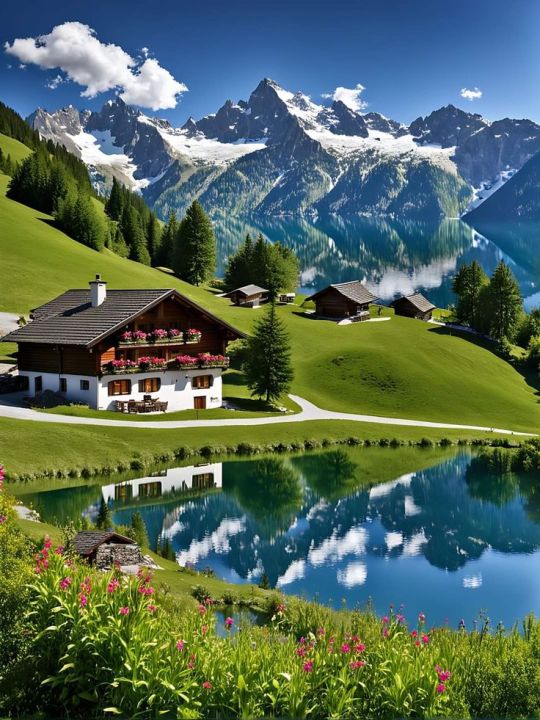
One of the first things that captivates visitors to Switzerland is its breathtaking scenery. The country is dominated by the majestic Alps, with towering snow-capped peaks that attract adventurers and nature lovers from around the globe. Whether it’s skiing in world-class resorts like Zermatt and St. Moritz or hiking through verdant valleys and along crystal-clear lakes, Switzerland offers outdoor experiences that are hard to rival. Beyond the Alps, the country is dotted with picturesque towns, lush meadows, and sparkling lakes, such as Lake Geneva and Lake Lucerne, each offering their own unique charm. The country's commitment to environmental preservation further enhances the beauty of these landscapes, ensuring that they remain pristine for future generations.

Swiss culture is characterized by diversity, which is reflected in diverse traditional customs. A region may be in some ways culturally connected to the neighbouring country that shares its language, all rooted in western European culture. The linguistically isolated Romansh culture in Graubünden in eastern Switzerland constitutes an exception. It survives only in the upper valleys of the Rhine and the Inn and strives to maintain its rare linguistic tradition.
Switzerland is home to notable contributors to literature, art, architecture, music and sciences. In addition, the country attracted creatives during times of unrest or war. Some 1000 museums are found in the country.
Among the most important cultural performances held annually are the Paléo Festival, Lucerne Festival, the Montreux Jazz Festival, the Locarno International Film Festival and Art Basel.
Alpine symbolism played an essential role in shaping Swiss history and the Swiss national identity. Many alpine areas and ski resorts attract visitors for winter sports as well as hiking and mountain biking in summer. The quieter seasons are spring and autumn. A traditional pastoral culture predominates in many areas, and small farms are omnipresent in rural areas. Folk art is nurtured in organisations across the country. Switzerland most directly in appears in music, dance, poetry, wood carving, and embroidery. The alphorn, a trumpet-like musical instrument made of wood has joined yodeling and the accordion as epitomes of traditional Swiss music.
references: Switzerland - Wikipedia
64 notes
·
View notes
Photo
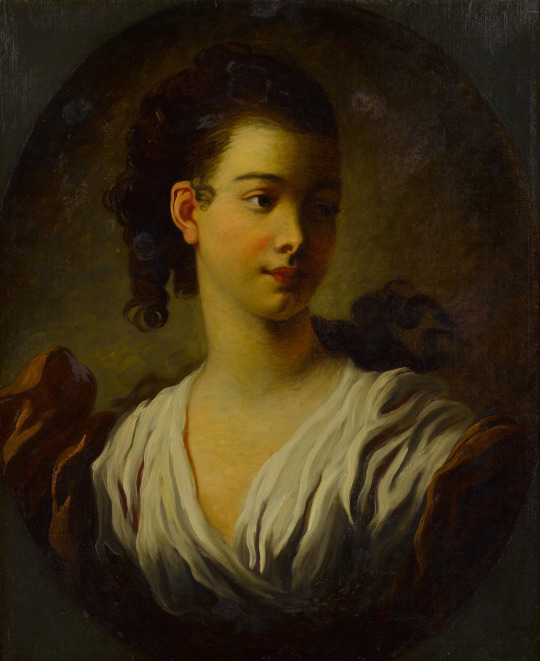
After Jean-Honoré Fragonard (French, 1732 - 1806) Portrait of Madeleine Riggieri, called Adeline Colombe
#Jean-Honoré Fragonard#art#fine arts#classical art#female portrait#french art#european art#beautiful art#Madeleine Riggieri#adeline colombe#fine art#traditional art#female#portrait#woman#oil painting#1700s#1800s#she lived in the 1700s#might have come from a musical family that produced 3 singers#need more research later#europe#europa#mediterranean
21 notes
·
View notes
Text

This Sunday Ethan will be part of "Together at Hanukkah" a very special show that will stream on Behindthemirrorofmusic.com from 8pm UTC.
"Together at Hanukkah" is an event to spread love and light in the Jewish community and raise money for the MDA the Magen David Adom the Israeli paramedic organization.
A selection of Jewish artists will perform songs and readings for the good cause.
#ethan freeman#poto#phantom of the opera#european musicals#elisabeth das musical#the phantom of the opera#jekyll and hyde#jewish heritage#jewish holidays#jewish tradition#hanukkah#jumblr#jewish artist#jewish art#jewish
5 notes
·
View notes